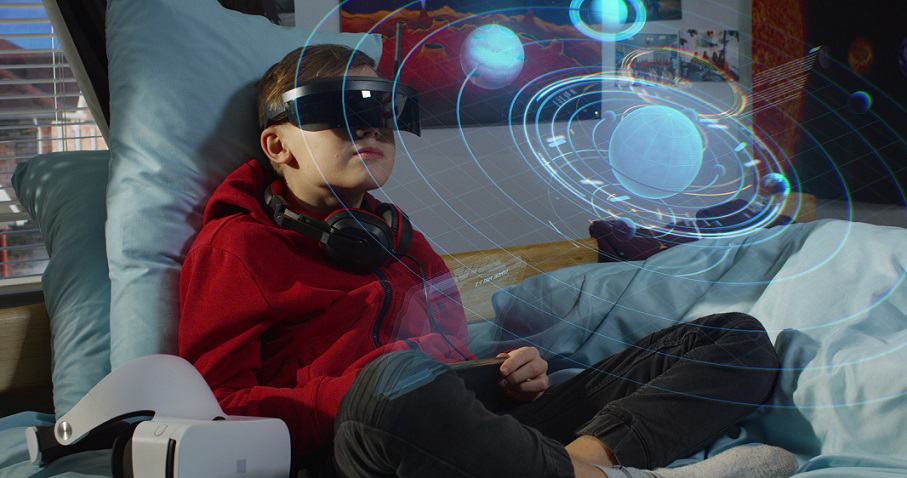By distance learning we mean a style of learning where teachers and students are physically separated, hence the teaching is not done in a classroom, but a set of technologies is used to ensure activities are carried on regularly and the communication is facilitated.
Prior to the pandemics this practice was very limited and mostly dedicated to students living in remote areas or suffering from health problems forcing them to stay home.
However with the Covid-19 outbreak distance learning has become the main teaching method, involving over 1.3 billions students in 186 countries (Source: Unesco).

How Distance Learning works and is it effective?
Starting from the first quarter of 2020 hundreds of millions of students everyday have begun to connect remotely with their teachers and the rest of the classroom on a variety of video call platforms including Zoom, Meet and Skype.
This way of teaching has its advantages and disadvantages, letís dig into them.
Main advantages of Distance Learning
- Flexible scheduling
- Educational activities are not interrupted even during the pandemic
- Reduction of trips, in some cases very long
Main disadvantages of Distance Learning
- Not being in the classroom may be less effective in terms of learning
- Harder to focus in a non-school environment full of distractions
- Kids need assistance from their parents
Summing it up, distance learning has proven to work quite good since the technologies available today allow for an effective learning experience. However since the pandemics was an unexpected event, the way distance learning has been carried out may not be the optimal one and surely doesnít take into account that the learning experience has its own peculiarities and teachers should not replicate online the same exact classroom experience.
One of the areas that require improvements is teaching materials. In class learning provides a certain type of engagement that distance learning doesnít provide and sometimes, studying alone, at home, without being in front of a blackboard or in a school lab, can be quite frustrating, especially for STEM subjects.
One way to fill this gap may be starting to integrate digital content and lessons into traditional teaching materials, letís see how.
How to use AR to improve the Distance Learning experience
There are several ways to use Augmented Reality in the Education domain, some involve simply providing immersive teaching materials, other involve getting students to experience how to use AR in creative ways. We listed a few use cases we believe can add value, especially in a Distance Learning context, where students could feel less involved.
AR in Education Case Studies
- Immersive Lessons
- Teachers can prepare AR content to deliver additional digital content to their students during traditional lessons. Students at home can use their own mobile devices to enable Augmented Reality media on their books.
- Remote Teamwork
- With students being physically separated from each other, it has become difficult to encourage collaboration during the teaching process. However, certain AR platforms, like AR-media, provide the ability to work together in the creation process of AR content. Such projects can be assignments from the teachers on specific subjects.
- Tests & Quizzes
- Testing the students through a webcam can be quite challenging and here is where AR comes to the aid. Teachers can prepare tests and quizzes and distribute them via an AR app, so that students can enable that kind of content by simply scanning a specific book page. The main advantage for teachers is to get all the data gathered into a platform that provides immediate feedback on how the students scored on those tests.
- Immersive Tours
- Traveling in the last year has almost become a tabu and students have stopped traveling as well since all the school trips have been suspended. Despite the current restrictions, AR and VR offer a unique way of virtual travelling in order to see and discover new places. School could easily create and let their students experience virtual tours. This use case can also be useful in preparation for real trips, when the situation will be back to normality.
- Acquiring new digital skills
- Finally, Augmented Reality can also be acquired as a new digital skill by students, with the support of their teachers. Using AR-media, teachers can involve their students in 3D project creation activities to be visualized on mobile, without any coding skill required. It is a great way to get young students familiarise with this promising technology.
Whatís next in EdTech?
As you will have understood, technology is changing the way students learn worldwide and the Covid-19 pandemics just contributed to the acceleration of this process.

Educational institutions need to rethink how they want to engage students during the learning process by mixing traditional and proven methods with innovative tools and technologies, with the double goal to make the process more appealing and at the same time to transfer new digital skills to the kids.
Even before COVID-19, there was already high growth and adoption in education technology, with global edtech investments reaching US$18.66 billion in 2019 and the overall market for online education projected to reach $350 Billion by 2025 (Source: Business Insider). Among the tools being adopted the most we have language apps, virtual tutoring, video conferencing and eLearning software.
In the future the EdTech field will develop even more and increasingly sophisticated technologies will be made available to the public, one of these will be AI teaching algoritms.

